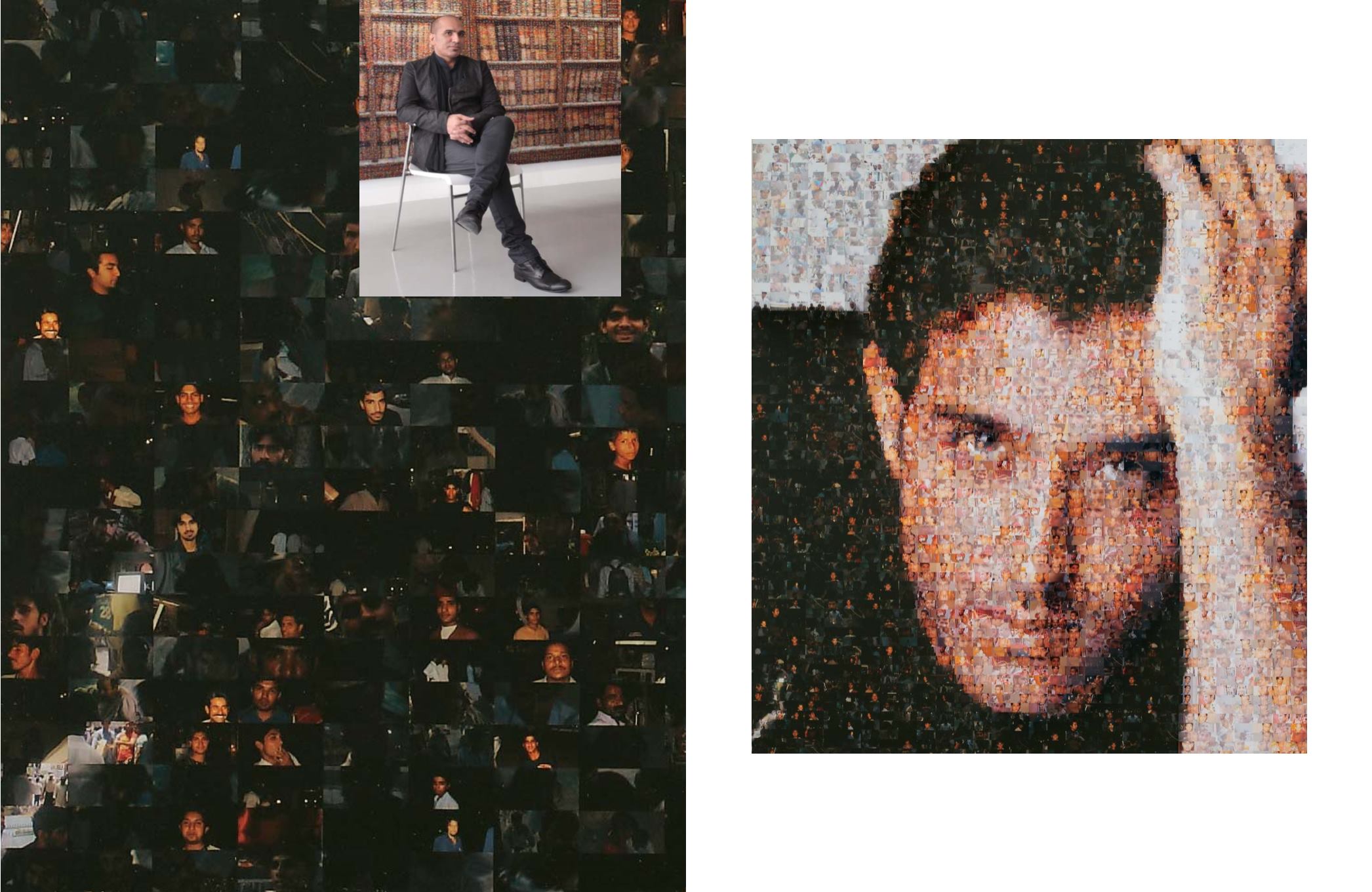

The present lot is part of Rana’s
Ommatidia
series,
named for the term which defines the bio‒structural
components that hold together the multiple lenses
that form the compound eye of a housefly. As
suggested by the title, the works in this series are
“pixellated” reproductions of popular poster images
of Bollywood stars Shah Rukh Khan, Salman Khan
and Hrithik Roshan (the subject in the present lot).
The photographic montage of the actor – an idolised
figure in India and South Asia – is composed of
several thousand photographs of ordinary young men
taken from the streets of Lahore. “Tiny documentary
photographs taken in the chaotic streets of Lahore
provide a wider picture of celebrity as figment; a mass
81
RASHID RANA
(b. 1968)
Ommatidia I (Hrithik Roshan)
2004
C print + DIASEC
33 x 29.5 in (83.8 x 74.9 cm)
$ 6,250 ‒ 9,375
Rs 4,00,000 ‒ 6,00,000
From a limited edition of twenty
EXHIBITED:
Rashid Rana ‒ Identical Views
, New Delhi: Nature Morte,
10‒31 July 2004; Mumbai: Chatterjee & Lal, 12‒26 February
and New York: Bose Pacia, 19 July ‒ 20 August 2005
(another from the edition)
Subodh Gupta, Rashid Rana and L.N. Tallur
, New York: Bose
Pacia, 2005 (another from the edition)
Desi Pop
, Lille: Green Cardamom at Maison Folie
Wazemmes, 2006‒07 (another from the edition)
The 5
th
Asia‒Pacific Triennial of Contemporary Art
, Brisbane:
Queensland Art Gallery and Gallery of Modern Art,
2006‒07 (another from the edition)
Face East: Contemporary Asian Portraiture
, London: Wedel
Fine Art, 2008 (another from the edition)
The Empire Strikes Back: Indian Art Today
, London: Saatchi
Gallery, 2010 (another from the edition)
PUBLISHED:
Rashid Rana ‒ Identical Views
, New York: Bose Pacia,
Mumbai: Chatterjee & Lal, and New Delhi: Nature Morte,
2004‒05 (another from the edition)
The Empire Strikes Back: Indian Art Today
, London: Saatchi
Gallery, 2010 (another from the edition)
Rashid Rana
Image courtesy of the artist
media construct sustained by the projected, collective
dreams and aspirations of ordinary Pakistani society as
it jostles politically and culturally with neighbouring
India.” (Ulanda Blair,
Flash
, Victoria: Centre for
Contemporary Photography, March‒June 2007, p. 9)
The resulting effect serves to shift the viewer’s
focus from the idol to the structures that construct
and support his heroic image, literally as well as
metaphorically. “Visually, Rana’s prints are large,
sometimes even heroic in scale, and they appear
from a distance as slightly blurred, low‒resolution
renditions of banalities: landscapes, film posters or
press photographs. Drawing near, one realizes that
the large and visible ‘pixels’ are themselves smaller
photographs, which magically assemble to compose
the larger image. To step near, and away, and near again,
to see dark and light photographs becoming the pupil
or the highlight in somebody’s eye, is to experience
marvellous visual complexity. But there is also always
a carefully calibrated relationship between the larger
image and the smaller images that compose it, and
this relationship provides an intellectual substance
that endures even after the first visual surprise ebbs
away. Usually chosen with caustic wit, the smaller
images tend to subvert or at least complicate the
larger image that they create, setting up a complex
relay of meanings and their deconstruction.” (Quddus
Mirza, Adnan Manani, Kavita Singh et al.,
Rashid Rana
,
Mumbai: Chatterjee & Lal and Chemould Prescott
Road, 2010, p. 25)
92
93


















